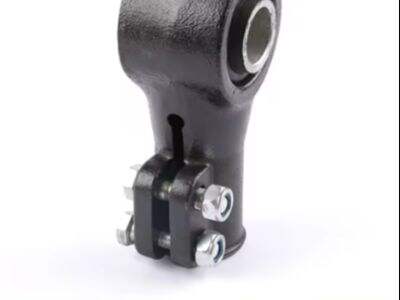Ever seen pipes, machine parts, or even kitchen implements with a grainy look? If so, they were probably made of gray cast iron! LF gray cast iron castings is one of the most prolific materials: from cars, buildings, and day-to-day products that one sees- everywhere! But what does it exactly owe to these grey cast iron, what makes it so particular and darling? So here we go and get to know more about this cool material in a matter of interesting and useful way!
Understanding the Basics
There is a special type of iron that humans have been working with for many centuries that is known as Grey cast iron. It is structured in flakes, which gives it a different look and behavior from other types of iron materials. When the iron is being made, this special flake structure occurs, along with tiny pieces of graphite mixing in with the iron. This graphite flake allows the iron to absorb energy, and therefore it is more resilient against shattering when something impacts it. It also makes grey iron very good in resisting wear and vibration.
Because gray iron is produced at little to almost no cost and is therefore comparatively simple to produce in volumes, it is widely in use. This reduces costs and makes it a usable and acceptable option for a huge set of applications and industries. And because of its economy with strength, grey cast iron is used in many goods on our daily life.
Versatility and Dur ability
The wonderful strength with excellent flexibility of grey cast iron is that it can resist high temperatures, friction, and stress without breaking or deforming. This makes it very useful for many applications requiring stability and consistency. For example, grey iron pipelines are used to transport water, gas, or oil over long distances. LF grey iron casting are made to last, thus not easily rusting or leaking, which is an important safety and efficiency requirement.
Grey iron is used for the brake parts in cars and trucks. These parts need to be able to withstand the heat and wear from all of the stopping and starting we do behind the wheel. The grey iron is just the right material for the task because it can stand heat without sustaining damage.
Moreover, grey iron can easily be molded and given different shapes and forms. It is because various products can be produced out of grey iron, an open field for engineers as well as designers.
Piping and Machinery
Due to the remarkable characteristics and properties of the material, grey cast iron is applied in several markets. The following are some products of grey iron applications
Pipes: Grey iron pipes are of extreme importance to the transportation of fluids and gases in municipal water systems, sewage systems, and industrial processes. Unlike copper pipes, they don't corrode easily so need fewer repairs and can see many good years of service before they need to be looked at again. A low coefficient of friction also minimizes energy costs when movement through them.
Grey iron
Parts of machinery, such as: engine blocks, gearboxes, conveyor systems. The part involved must be extremely robust; abrasion-resistant and form with high precision. It needs to have the graphite's structure in a unique pattern that would give strength to the material in such vital applications.
Cookware - Cookware made from grey iron are preferred by many chefs and also home cooks. It is popular because it can cook food evenly and holds the heat for a long period. This means that you will end up cooking food more evenly and more deliciously. The griddles, Dutch ovens, and pans are all safe for stovetop and oven use, as well as sometimes on the grill. Grey iron cookware can last for generations, so it is an investment for any kitchen.
Composition and Properties
Grey cast iron is prepared by smelting iron in a furnace and mixing it with carbon and other impurities, such as silicon, manganese, and sulfur. LF grey iron castings have higher carbon content than any other type of iron, thus possessing some special properties. During the casting of iron, these graphite flakes are formed and serve as in-built lubricant. And that minimizes when the iron actually comes into contact and creates friction and wear on the iron itself.
At the same time, these small flakes create micro-cracks that absorb energy and quench vibrations. So, grey iron is good for applications where shock absorption is needed, for example, between machinery and in construction.
Processes and Techniques Explained
The first step of grey iron production includes several critical actions. Here is a quick summary of each step: Pattern making: The pattern is actually a model for the parts to be made in iron. Sometimes, the pattern is a composition of materials such as wood, plastic, or even metal. The pattern, in essence, is used to make a mold, which is used to make the final product.
Molding: Laborers fill a molding material, typically sand, around a pattern to form a mold. This results in a void, or cavity, to be filled with hot, molten iron. After preparing the mold, they remove the pattern, which fills the inner cavity.
Molten Iron Pouring: The molten iron is poured into the cavity by a channel that is termed as a sprue. It is connected to the mold, thereby making the channel for access of the hot iron more accessible. On cooling down, the molten iron gets hardened in the mold to form the die cast part.
Finishing: After the iron has cooled and solidified, the part is demolded. Then, it is finished i.e. cleaned, trimmed and shaped to the final dimensions. The surface may get sandblasted, painted, or coated with some protective layer to keep it looking nice and provide an additional barrier.
Grey cast iron is the powerful and flexible substance which proves to be indispensable in numerous industries and applications. Such particular properties make it an excellent choice for any product demanding stability, resistance to wear, and easiness to be shaped. It makes one wonder how the world could have existed without grey cast iron!

 EN
EN
 CS
CS
 DA
DA
 NL
NL
 FI
FI
 FR
FR
 DE
DE
 EL
EL
 IT
IT
 JA
JA
 KO
KO
 PL
PL
 PT
PT
 RU
RU
 ES
ES
 TL
TL
 ET
ET
 TH
TH
 MS
MS



